Characteristics of Cedar Movici Honey Coffee in the 2020 New season introduction to the West Alxi region of Ethiopia
The Honey of Ethiopia's Cedar Movici
Ethiopia Sidami West Arsi
Coffee producing areas: West Dharma, West Alsi (West Arsi)
Planting altitude: 1900-2200m
Coffee varieties: native species (Heirloom)
Treatment method: sun treatment (Natural)
Grade: G1
Coffee producing area
The Sidamo producing area is located in southern Ethiopia, extending to the districts of Arsi and Bale in the east and Gamogofa in the west. Sidamo coffee is cultivated at the altitude of 1400m-2000m. The industry here is dominated by agriculture, and the main growing area of coffee is around the Great Rift Valley (Great Rift Valley) of East Africa. Sidamo has developed rapidly in recent years and is an important distribution center for coffee export. The coffee flavor of Sidamo is very diverse, and the different soil types, microclimate and countless native coffee species make the coffee produced in each town have obvious differences and characteristics.
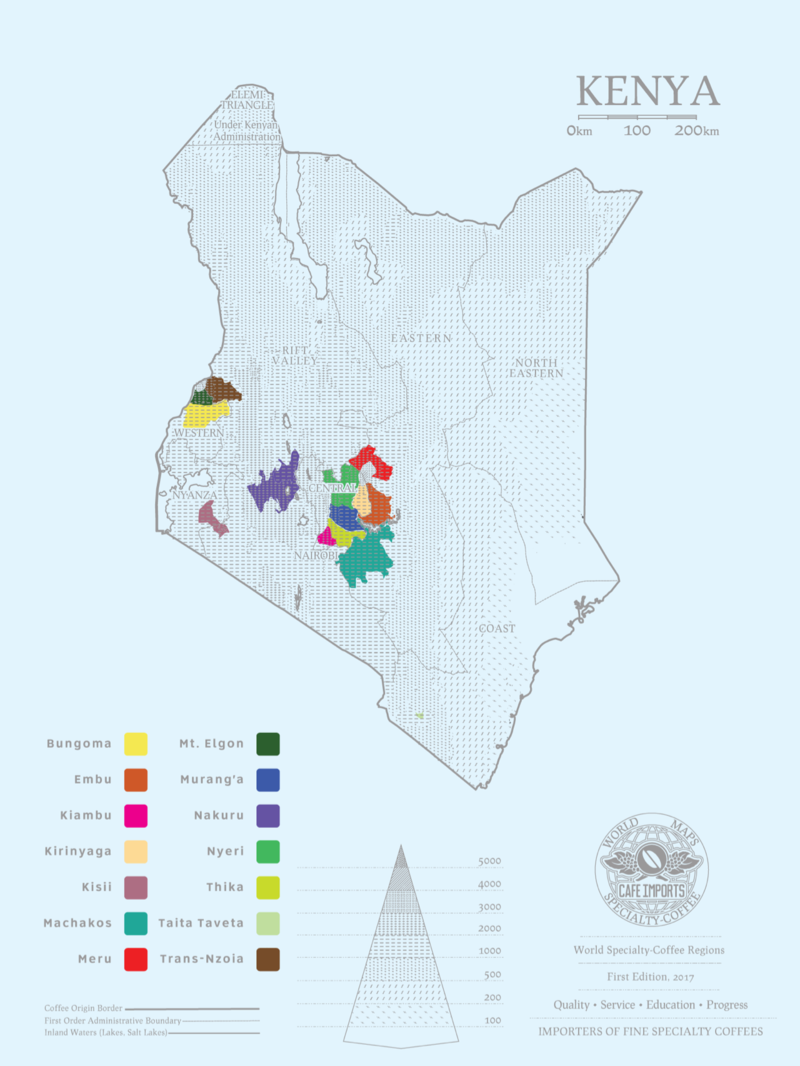
West Arsi is located between the famous Yirgacheffe coffee growing area and the Haller Hararge, in the western part of the Sidamo region, named after a branch of the Oromo people who have lived here for a long time.
West Alsi consists of three woredas, namely, Arsi (Arsi), Bale (Bale) and East Shewa (Ethiopia's third-tier administrative region). About 88.52% of the population of West Alsi is Oromo, which is very important in the history of coffee because they are the first tribes to drink coffee in human history, and half of the coffee produced in Ethiopia comes from the region.
Coffee variety
Heirloom native species, most Ethiopian varieties will be named after this name, in fact, because Ethiopia has too many varieties, it is like the natural gene bank of Arabica, on the one hand, there are many varieties, and it is difficult to identify and classify them, on the other hand, the Ethiopian government is reluctant to disclose the information of these varieties for the sake of protection, so it is collectively called "native species" (Heirloom).
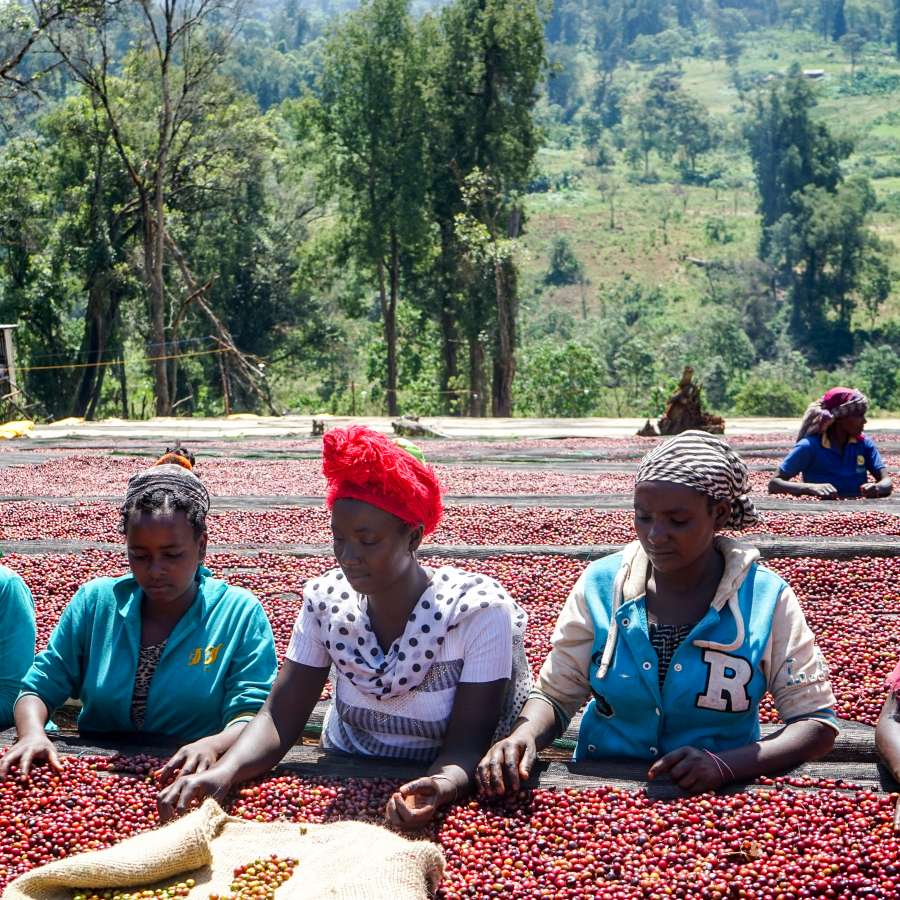
Treatment mode
During the coffee harvest, the farmers in West Arsi only picked ripe red fruits and put them in baskets one by one. The picked coffee fruit has uniform size, similar maturity and no other impurities.
In the process of treatment, it is necessary to manually screen defective coffee beans and immature or overripe coffee fruits.
Then lay the coffee red fruit on a high wooden frame or whole scaffolding to make the sun, so as to avoid the risk of beans smelling on the ground. In the process of exposure, it will constantly turn to ensure that the coffee beans can be evenly exposed to water; every three to five days, farmers will manually screen out the defective and moldy beans.
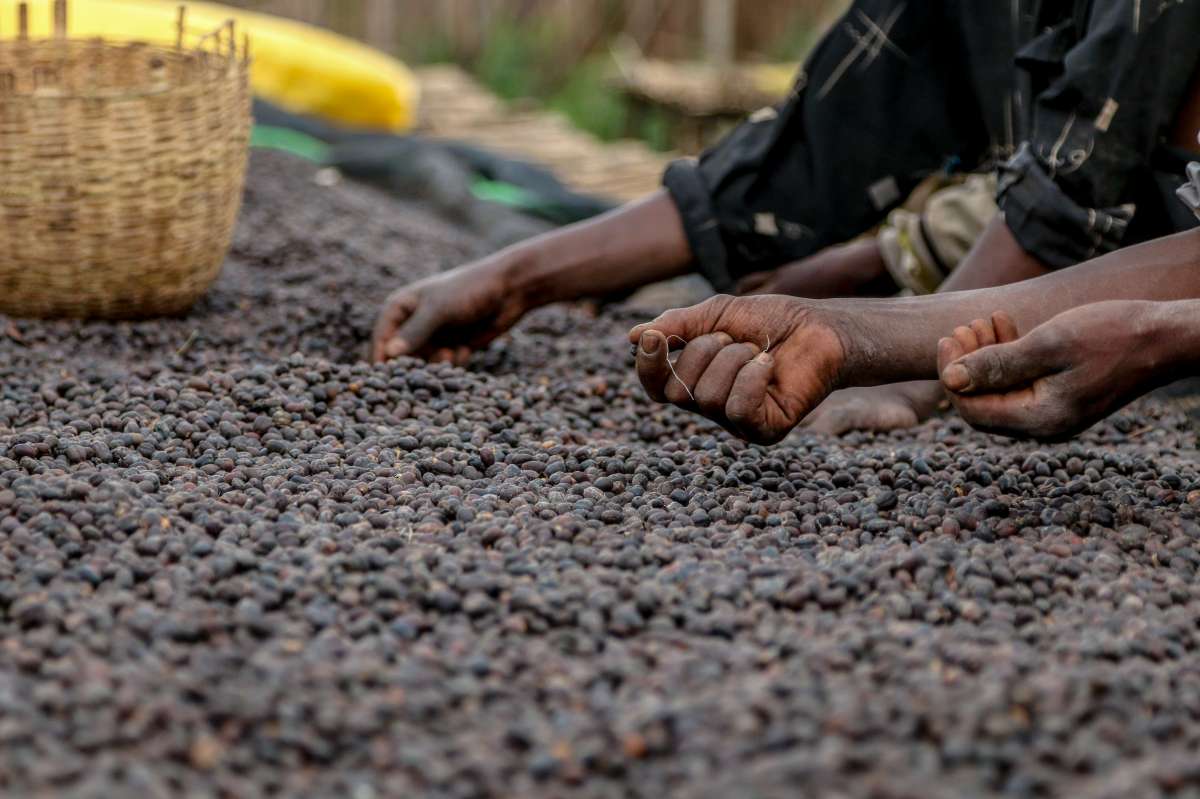
Wait for the peel to dry and harden, and then use a sheller to remove the hard peel. After obtaining the raw coffee beans, in order to pursue the perfect taste, the farmer will do the last screening, so this sunbathing Vessie honey can reach the highest grade G1.
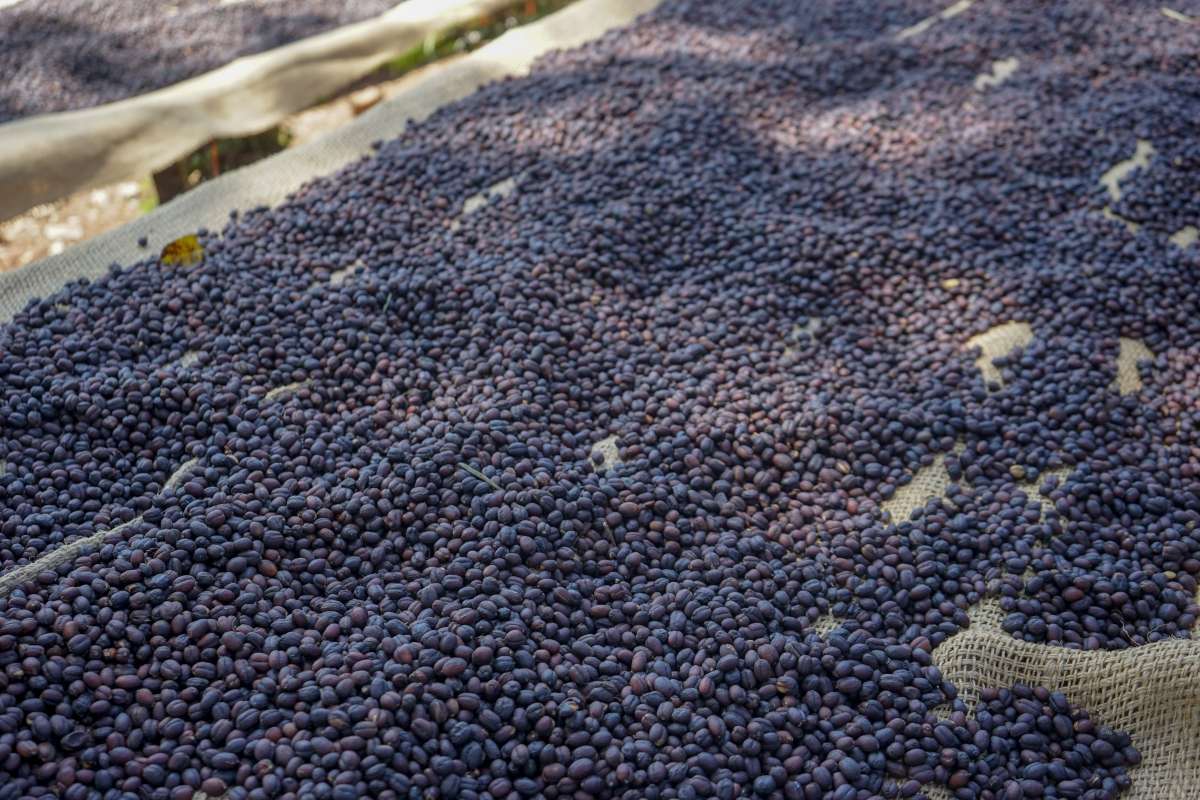
Baking curve
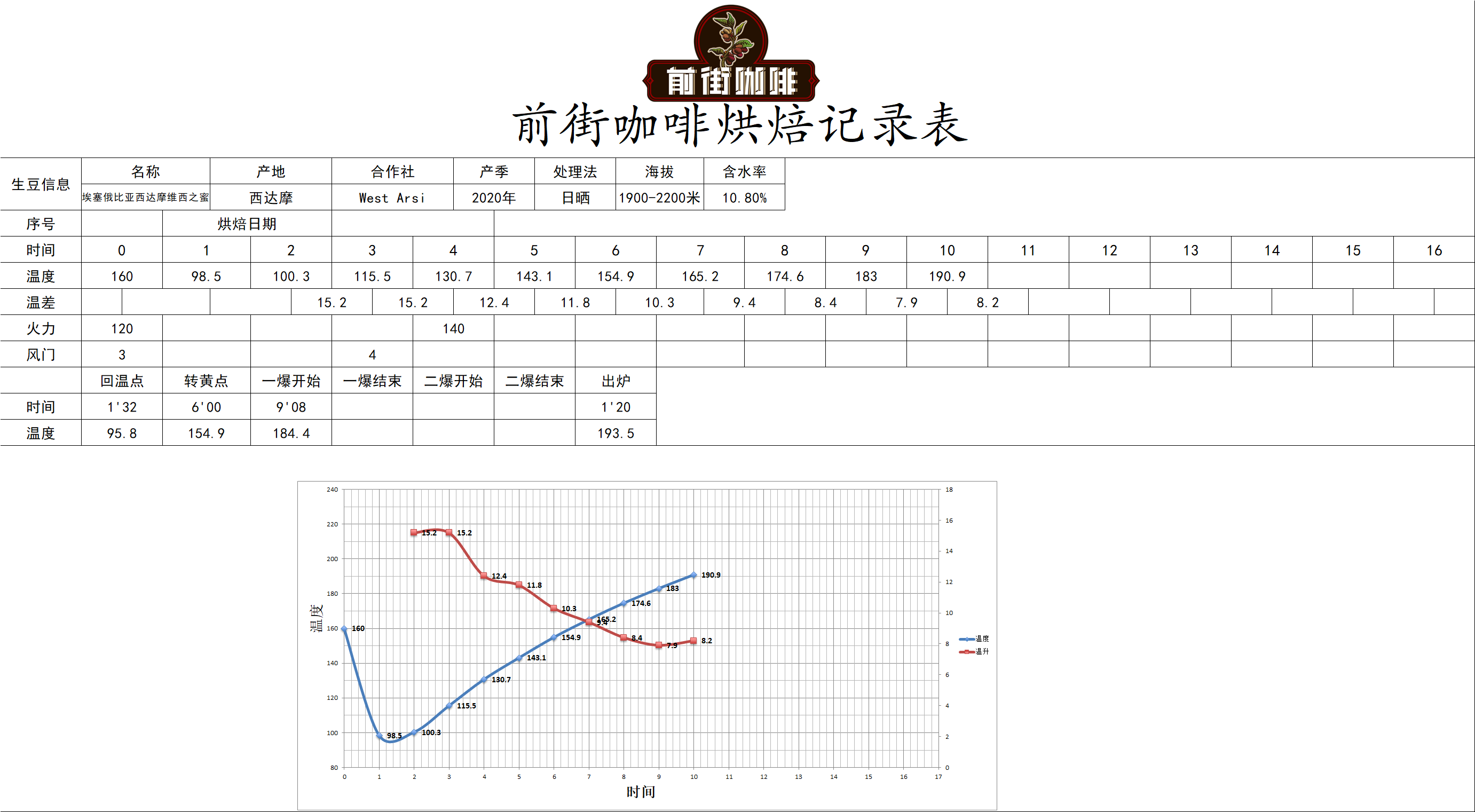
Test the flavor by cup
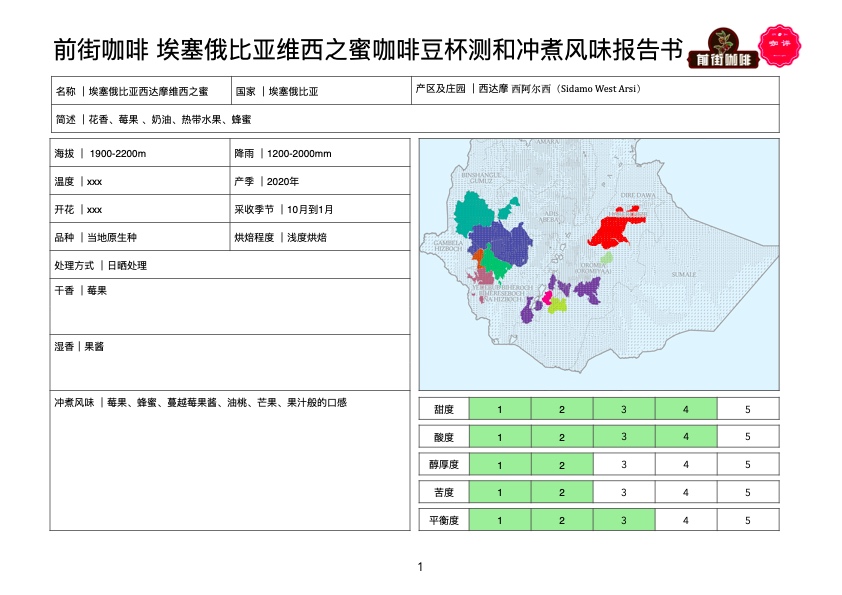
Important Notice :
前街咖啡 FrontStreet Coffee has moved to new addredd:
FrontStreet Coffee Address: 315,Donghua East Road,GuangZhou
Tel:020 38364473
- Prev

New Oriental Highland Coffee in Guatemala What is the aroma solarization method
Guatemala. New Oriental Heights. The smell of wine. Sunlight producing area: New Oriental Highland Altitude:1300~1700 Variety: Bourbon. Cadura Harvest: December to March Treatment: Bouquet Sunburn Rating:SHB Flavor Description: Citrus, Dark Chocolate, Plum, Wine, Pineapple "Bouquet Sunburn Treatment" does not refer to the addition of red wine to the green bean treatment process, but to the use of similar red wine fermentation
- Next

2020 Costa Rica COE Excellence Cup ranking released when will Costa Rica COE auction
Trophy of Excellence Competition: thanks to COVID-19, the Cup of Excellence match in Costa Rica is completed through the following process of blind testing of designated coffee: pre-selection stage: may 20-23 times with 9-week national judges in San Jose, Costa Rica Irving Mierisch as chief referee and Victor Cadena as alternate referee. Country phase: June 2, 2nd-5
Related
- Detailed explanation of Jadeite planting Land in Panamanian Jadeite Manor introduction to the grading system of Jadeite competitive bidding, Red bid, Green bid and Rose Summer
- Story of Coffee planting in Brenka region of Costa Rica Stonehenge Manor anaerobic heavy honey treatment of flavor mouth
- What's on the barrel of Blue Mountain Coffee beans?
- Can American coffee also pull flowers? How to use hot American style to pull out a good-looking pattern?
- Can you make a cold extract with coffee beans? What is the right proportion for cold-extracted coffee formula?
- Indonesian PWN Gold Mandrine Coffee Origin Features Flavor How to Chong? Mandolin coffee is American.
- A brief introduction to the flavor characteristics of Brazilian yellow bourbon coffee beans
- What is the effect of different water quality on the flavor of cold-extracted coffee? What kind of water is best for brewing coffee?
- Why do you think of Rose Summer whenever you mention Panamanian coffee?
- Introduction to the characteristics of authentic blue mountain coffee bean producing areas? What is the CIB Coffee Authority in Jamaica?

